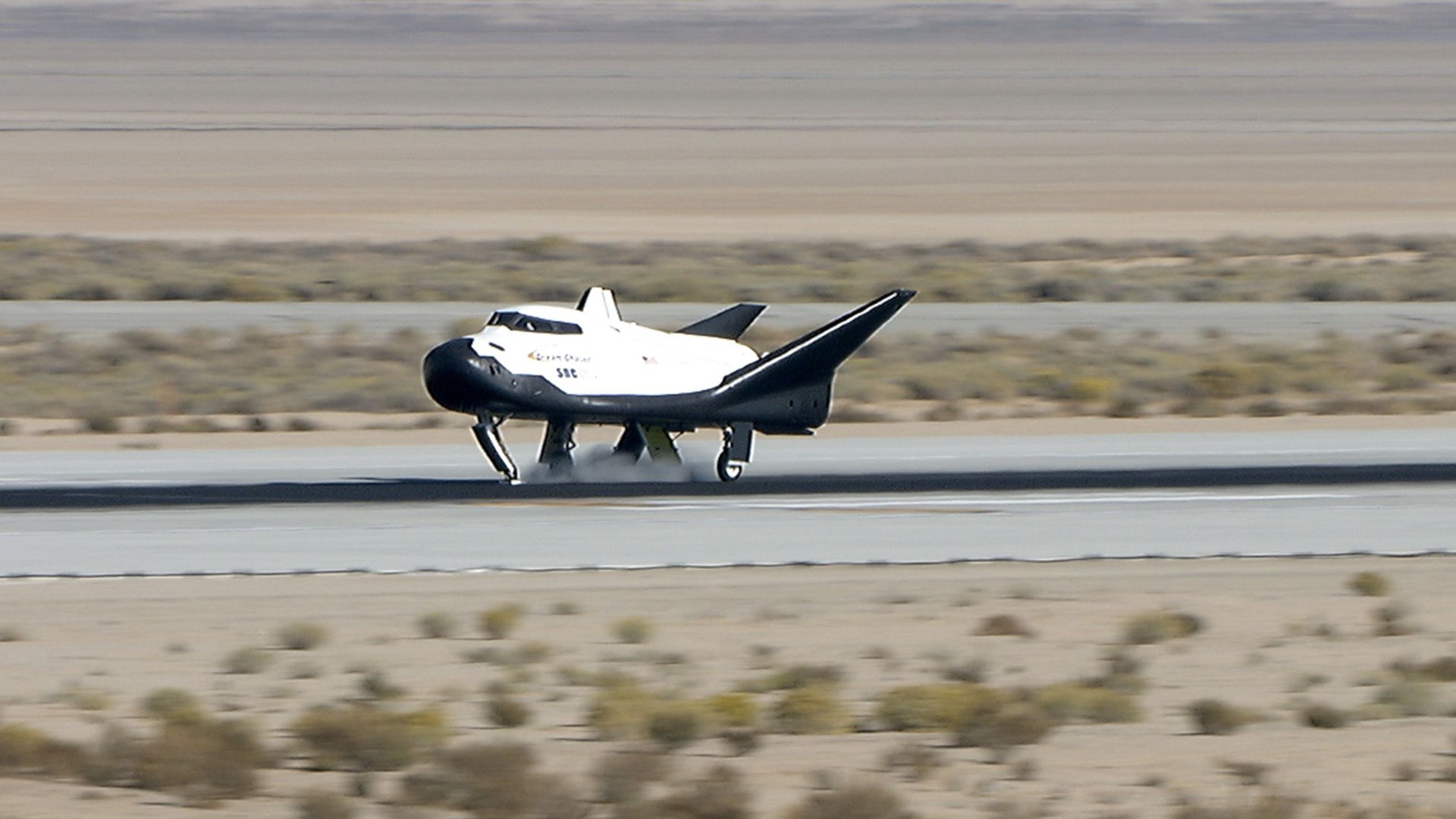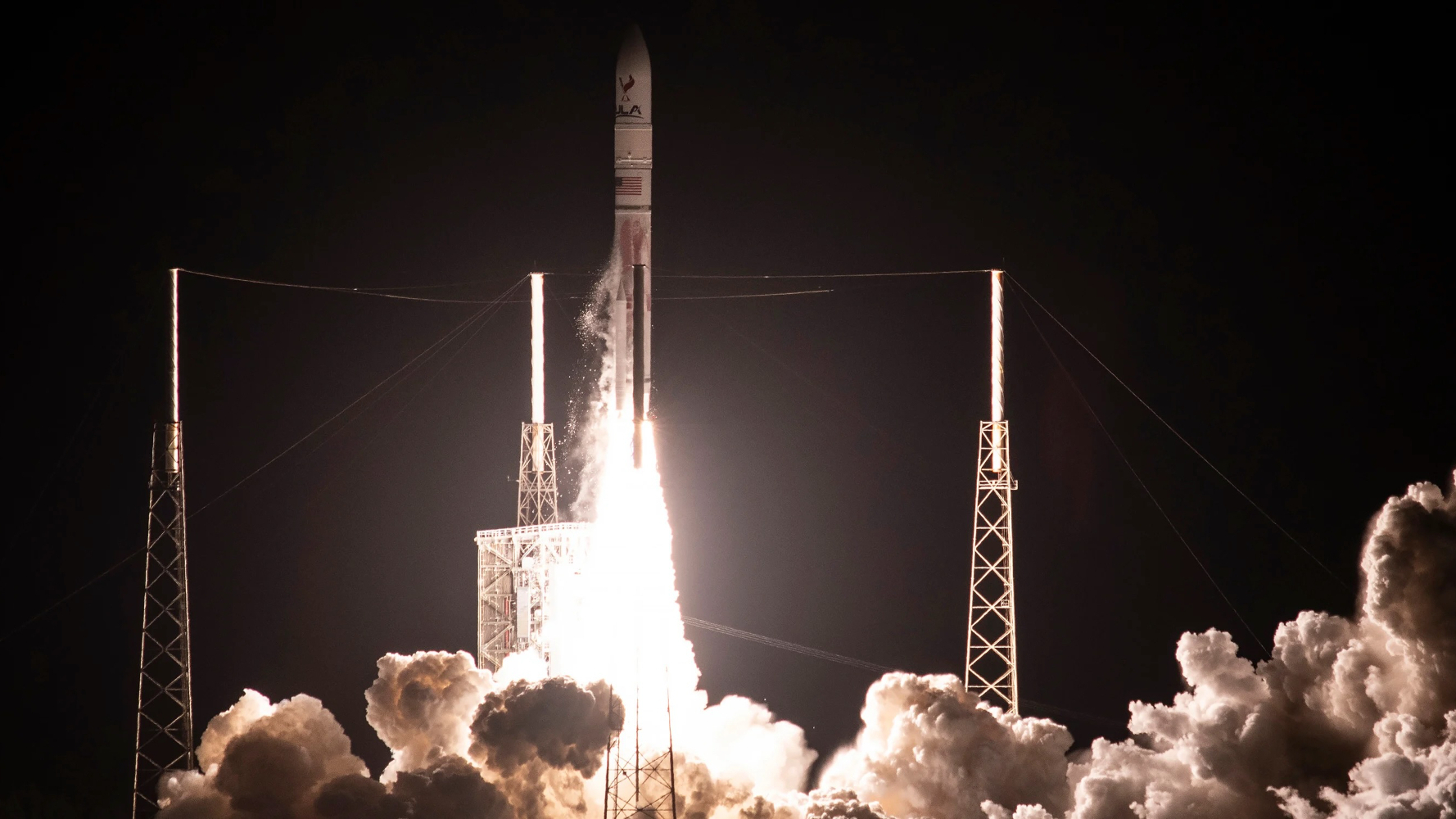ULA delays Dream Chaser space plane launch to certify Vulcan Centaur rocket for US military missions
'We waited as long as possible on Dream Chaser because we really wanted to fly them.'

Dream Chaser will wait again for its first flight to space.
The Dream Chaser spaceplane from Sierra Space will not launch this summer as planned aboard United Launch Alliance's (ULA) new Vulcan Centaur rocket. That means ULA plans to press ahead with two critical national security preparation launches that must be finished by the end of 2024, to satisfy U.S. Space Force needs.
ULA plans to focus its second-ever launch on Vulcan Centaur, a military certification flight called Cert-2, no earlier than September. Cert-2 will fly an inert payload, as well as experiments and demonstrations, CEO Tory Bruno announced today (June 26). Then a third preparation launch for U.S. Space Force will happen by end of 2024.
As for Dream Chaser: "We are working with Sierra Space to put the Dream Chaser back onto the manifest when they are ready to go," Bruno told reporters in a teleconference. "We waited as long as possible on Dream Chaser," he added, "because we really wanted to fly them."
A Sierra Space representative told Space.com they still could be ready to fly Dream Chaser by the end of the year. "We continue to make excellent progress on Dream Chaser and the spaceplane is on track to fly by the end of 2024," a representative told Space.com by e-mail.
"As a defense-tech prime, we understand how important ULA's Cert-2 mission is to the criticality of national security and our launch partner's schedule. We are working closely with ULA to identify the next available launch date," the statement added.
Get the Space.com Newsletter
Breaking space news, the latest updates on rocket launches, skywatching events and more!
ULA's first launch with Vulcan successfully delivered the private Astrobotic Technology Peregrine moon lander to space, which never made it to its destination due to an unrelated spacecraft anomaly. Bruno said based on that work, the rocket is otherwise ready to proceed with the effort to launch lucrative missions for the Space Force.
"It was a perfect fight and a bullseye, smooth as silk," Bruno said of the first mission, adding that it gave Space Force confidence to move forward quickly.
ULA and Space Force are also confident they can squeeze in a second military prep launch by end of 2024, as the Peregrine launch "was so very clean," he said. While the methane tank very slightly underperformed, more insulation on the tank is forthcoming to avoid those issues again on Cert-2.
Cert-2 will measure the propellant boil-off from Centaur to see if the glitch persists, and will send undisclosed experiments to orbit to "help us understand how to extend the duration of the [Centaur] upper stage and what the practical limits to that might be in the future," Bruno said.
ULA will then have a busy 2025 if all goes to plan. "We're going to fly 20 times if all the satellites show up," he said, referring to launches with both Atlas V and Vulcan. ULA is spending "a high tens of millions" on the two national security preparation launches in 2024 in anticipation that will pay off in new contracts, Bruno noted.

It's been a long road for Dream Chaser's first trip to space. Based on NASA's space shuttle and Soviet-era designs, it was an early participant in NASA's Commercial Crew Program (albeit under previous companies SpaceDev, and then Sierra Nevada Corp.)
Dream Chaser was not selected for commercial crew after SpaceX's Crew Dragon and Boeing's Starliner were chosen in the final round in 2014; SNC later filed a protest with the U.S. Government Accountability Office that was overturned after the office found no issues with the evaluation.
But Sierra Space's work with NASA was not over. In 2016, the spacecraft was selected under a Commercial Resupply Services 2 (CRS-2) contract from NAS tasking at least six flights to the ISS. (SpaceX and Orbital ATK, now part of Northrop Grumman, also received funding for their Dragon and Cygnus vehicles, respectively.)
Sierra Space's Dream Chaser development has been continuing, including ground testing and autonomous glide flights in Earth's atmosphere. Earlier this year, engineers also performed vibration and pressure testing at NASA's Neil Armstrong Test Facility in Ohio.
Join our Space Forums to keep talking space on the latest missions, night sky and more! And if you have a news tip, correction or comment, let us know at: community@space.com.

Elizabeth Howell (she/her), Ph.D., was a staff writer in the spaceflight channel between 2022 and 2024 specializing in Canadian space news. She was contributing writer for Space.com for 10 years from 2012 to 2024. Elizabeth's reporting includes multiple exclusives with the White House, leading world coverage about a lost-and-found space tomato on the International Space Station, witnessing five human spaceflight launches on two continents, flying parabolic, working inside a spacesuit, and participating in a simulated Mars mission. Her latest book, "Why Am I Taller?" (ECW Press, 2022) is co-written with astronaut Dave Williams.









